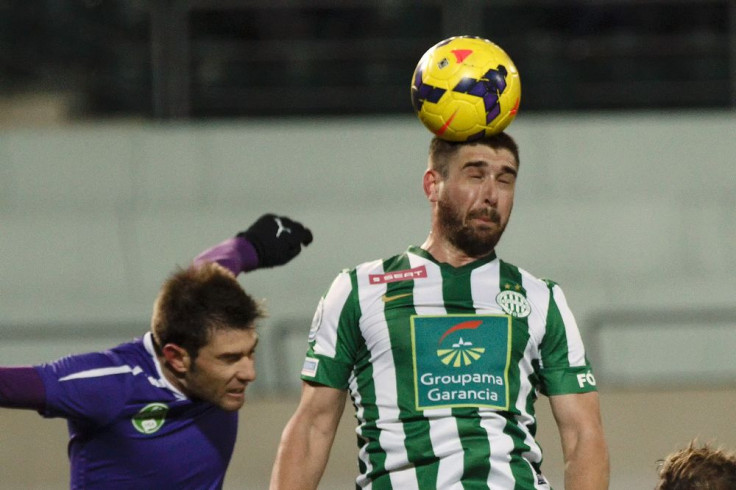Could Heading A Soccer Ball Cause Concussion? Researchers Say That More Evidence Is Needed

For many soccer players, heading a ball — using the head to move the ball around the field — is almost second nature. But considering that the ball sometimes travels more than 50 miles per hour, and players are heading it between six and 12 times a game, the maneuver could be putting players’ brains at risk. A recent review on some research finds that repetitive heading could be causing concussions without the players knowing it, and the authors are calling for more research into how the two relate.
“The practice of heading, which might occur thousands of times over a player’s career, carries unknown risks, but may uniquely contribute to cognitive decline or impairment in the short- or long-term,” Dr. Tom Schweizer, director of the Neuroscience Research Program at St. Michael’s Hospital in Toronto, said in a press release. “Thus, soccer players present a unique opportunity to study whether cumulative sub-concussive impacts affect cognitive functioning, similar to that of concussions.”
Sub-concussive impacts are blows to the head that don’t produce symptoms of a concussion, yet research suggests they might still affect a person’s brain function. A 2012 study published in the British Medical Journal found that football and rugby players from Penn State who suffered repeated blows to the head, and had also suffered a concussion, showed reduced connectivity between their brains’ hemispheres, and experienced “deficient balance and spatial memory problems.”
Schweizer’s review looked at concussion data from various research papers and found that concussions made up between 5.8 and 8.6 percent of total injuries on the soccer field. When it came to individual studies, one study found that 62.7 percent of varsity soccer players had suffered symptoms of a concussion during their career, though only 19.2 percent knew of it. Meanwhile, another one found that 81.8 percent of players who suffered a concussion had two or more of them, and were 3.15 times more likely to suffer another one. Studies that looked into how these players were concussed found mixed results, though. One found that 41.1 percent of them were caused by elbow, arm, or hand to the head, while another one found that 58.3 percent of them were from a heading “duel.”
Soccer is undoubtedly the world’s most popular sport. There are about 3.5 billion fans all over the world, and 265 million people play it, including 27 million in North America. As popularity increases in the U.S., the number of people playing will most likely rise too, leading to higher risks of concussions and other head injuries. It’s possible for concussions, although mild and temporary, to lead to other health problems if they are repeated. These could be problems with anything from memory and reasoning skills to depression and anxiety to problems with sensation like touch and smell, according to the Centers for Disease Control and Prevention.
Monica Maher, co-author of the review and a master’s degree student at the University of Toronto, said that it would be a good idea to look into injury prevention methods. “Use of protective headgear, limiting heading exposure, or stressing proper heading technique in younger children and increasing concussion education are all suggestions to perhaps decrease the incidence of head injury and their subsequent effects in the long run,” she said. Source: Maher M, Schweizer T, Comper P, et al. Concussions and heading in soccer: A review of the evidence of incidence, mechanisms, biomarkers and neurocognitive outcomes. Brain Injury. 2014
Published by Medicaldaily.com



























